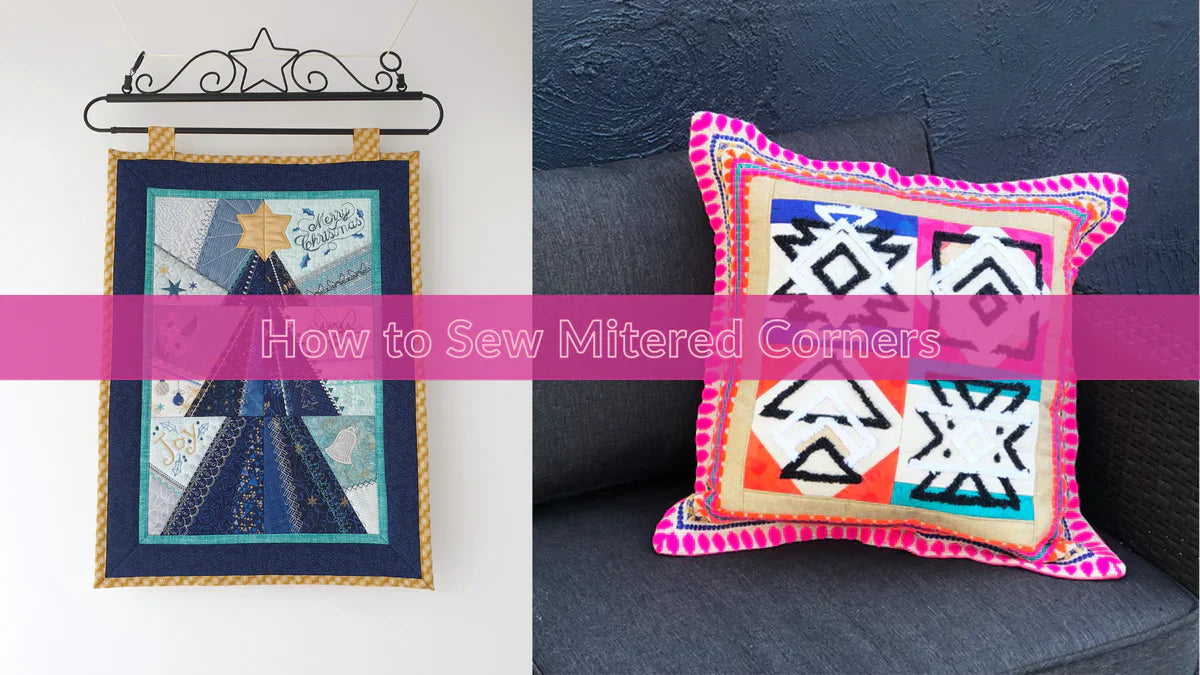The blanket stitch is a stitch traditionally used to reinforce the edge of thick materials. Depending on circumstances, it may also be called a "cable stitch" or a "crochet stitch".
Blanket stitching is an attractive way to sew a patch onto a finished garment or piece of fabric. The stitch is easy to do and it creates a cute border all the way around the outside of your appliqué.
For this blog we are using our Free Teddy Bear Appliqué set - including our Bear Throwing Flowers & Bear Holding Balloons patterns.
Teddy Bear Appliqué with Flowers or Balloons.
If you would like more information on putting your Teddy Bear Appliqué with Flowers or Balloons together we have a number of helpful blogs and video tutorials available (click the below links):
Cutting the Free Bear Appliqué Background
Using a Light Board and Steam a Seam to Apply Appliqué Pieces onto Fabric
Thread choice has a big impact on the way your appliqué looks.
Ask yourself:
Do I want the stitching to be visible, or do I want it to disappear into the appliqué?Do I want the colour to stand out or to blend? Matching threads will fade into your fabric selection, especially if you have a detailed pattern to the fabric and contrasting thread will pop from your appliqué.
Do I want added texture, or do I want a smoother, flatter, less noticeable edge? There are a wide variety of coloured and textured threads available. The important thing is making sure that your machine will like them, that your tension is set to accomodate them and they will ultimately suit your project.
Ensure that your appliqué is pressed flat. This will assist in keeping your stitches straight and the appliqué easy to manoeuvre.
Once you have all of your appliqué fused and pressed into place we are ready to stitch.
First we will be making a Quilt Sandwich.
For our Teddy Bear Appliqué the top layer is the appliqué panel, the middle piece is a piece of batting/wadding and the bottom layer is a piece of craft cotton or quilter's muslin.

A quilt sandwich is made up of the quilt top, the batting, and the quilt's backing. The layers are secured together using a process known as basting.
The steps you take to make a quilt sandwich depend on the type of quilting (by hand or machine) that is planned for the project.
You can learn more about making a Quilt Sandwich here:
How to make a Quilt Sandwich
We then pin our corners of the quilt sandwich to keep everything secure and stable.

You can do a basting stitch around the outside of your project, about 2.5cm (1") from the edge of your quilt sandwich. This will hold your project in place when doing your stitching.
It is helpful to use a long stitch when doing a basting stitch, so that this is easily removed when you're finished.
Now that your sandwich is secure, let's start stitching.
If you are working on the Teddy Bear Appliqué, like us, we recommend starting on the inside circle of your Teddy Bear Appliqué.
This will give your project a little more stability.
If your appliqué does have a large border or frame, starting there is good for holding your project together.

To give your project a lovely finish you stitch your blanket stitch along the edge of your appliqué with the bar of the stitch going into the other appliqué.
If you are working on a long curve like our inner circle of the Teddy Bear Appliqué move slowly and slightly adjust your quilt sandwich as you go.

Hills and Valleys are a tricky shape to master.
We recommend starting in the valley of your appliqué and moving over your hill.
Work around the outside edge of one of those curves, with the bar of the blanket stitch, stitching inwards over the appliqué.
Go all the way over until you come back to the valley, try as best you can to end your blanket stitch in the crease in the valley.
You may have to adjust your stitch length between the two valleys of this appliqué.
If your stitches are looking like they are not going to quite make it, you can either push the fabric to extend your stitch or pinch the fabric to shorten it.

Working with more intricate appliqué can be tricky, but it just a matter of taking it once stitch at a time. Move your way around your shapes slowly and take note of where your needle and appliqué sit.

As you can see from our pictures and video tutorial, we have the blanket stitch happening on the right hand side of our foot.
Not every sewing machine is able to do this, however it is easier to use an appliqué foot and have the needle to the right hand side, as it makes it easy to direct your fabric against the edge of the foot.
Tip: To save yourself having to constantly stop and turn your appliqué while doing your blanket stitch, you can lighten the foot pressure off by just one notch. This allows you to turn under the foot quite easily without any puckering occurring.
We hope you enjoyed our blog and video tutorial.
We have more appliqué and sewing tutorials available on our website:
https://sewswpea.com/blogs/tutorials
We also have a wonderful online sewing community you can join to learn from, be inspired by and create with.
Sew Sweet Pea Applique & Sewing Patterns:
Members of our Sewing Community receive access to our Teddy Bear Appliqué set FREE and are regularly updated on new releases.




Leave a comment
All comments are moderated before being published.
This site is protected by hCaptcha and the hCaptcha Privacy Policy and Terms of Service apply.